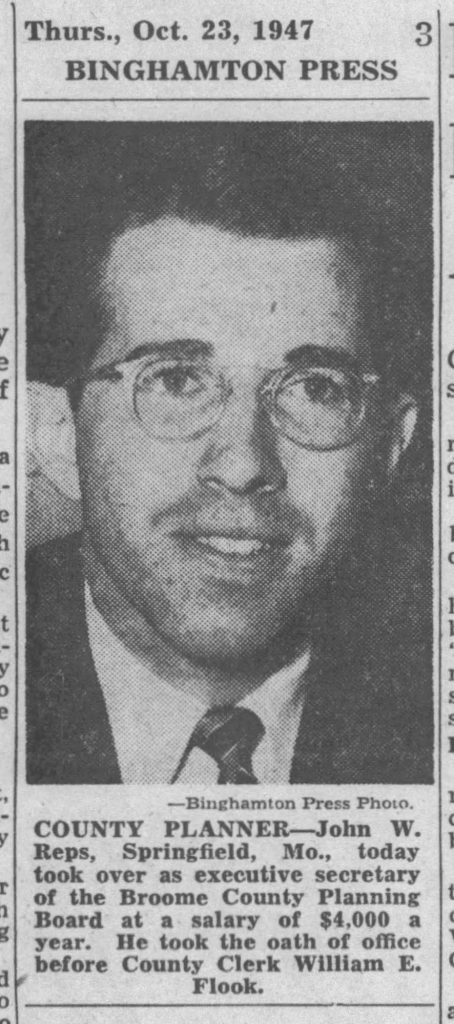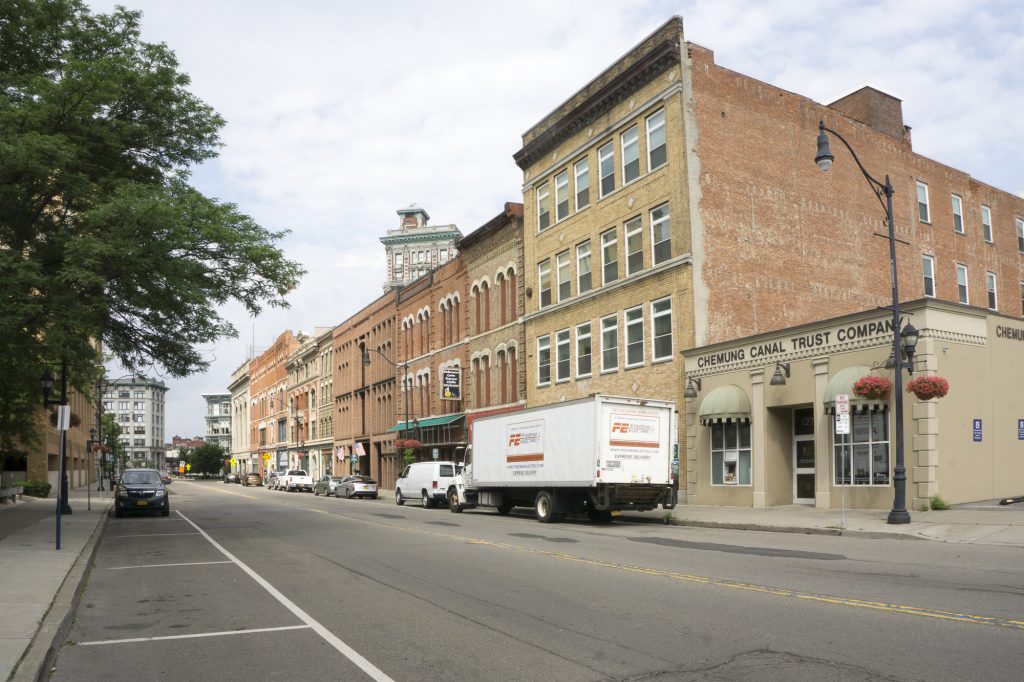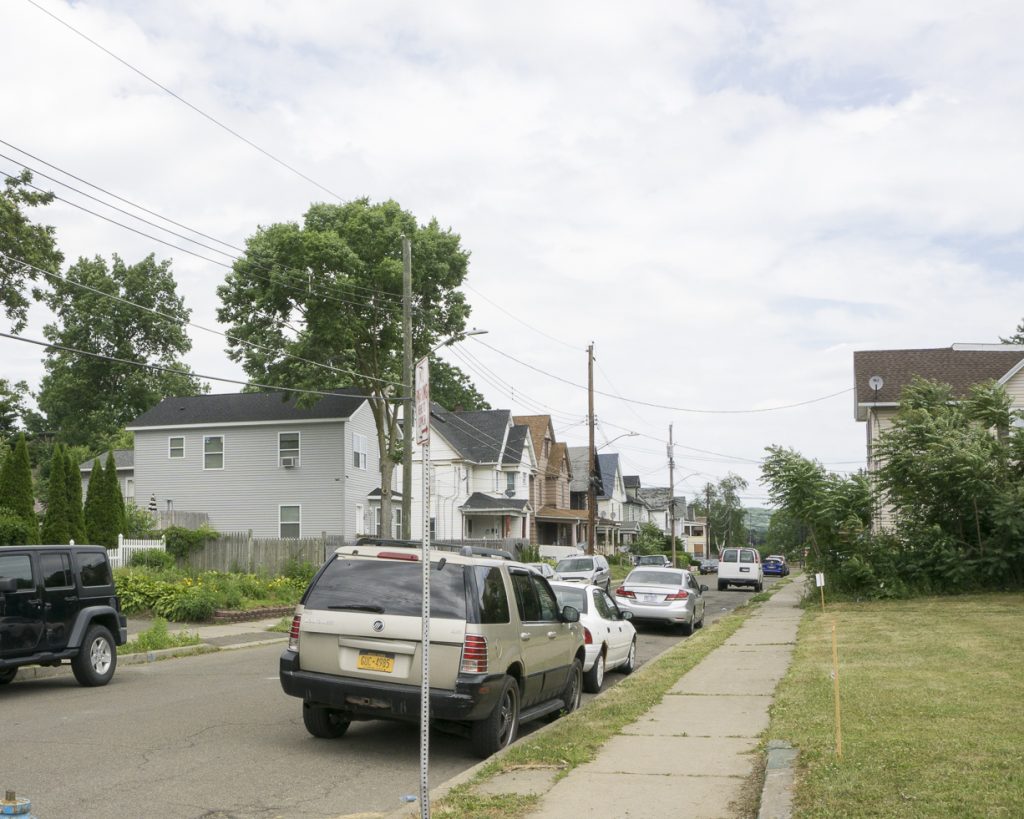As I mentioned last week, my colleague Samuel Gruber and I have been working on a National Register of Historic Places nomination for the City of Binghamton, creating a single Downtown Binghamton Historic District by means of consolidating three earlier historic districts, all listed in the 1980s) into one, and expanding them spatially to create a district that is larger than the sum of the original three. We have also brought the period of significance forward to 1975. This has allowed us to incorporate the urban renewal era, which in Binghamton had a fascinating history and a surprising record of success. Over the next several posts, I will look into that history, and point to some of the key architectural monuments.
The City of Binghamton first had a planning commission in 1928, which was reorganized in 1932 into a City Planning Board in accordance with a new New York State law. This reorganization was driven in part by completion the first city plan for Binghamton, which was developed by Harland Bartholomew & Associates of St. Louis, MO. The new City Planning Board, however, seemed to fade into the mists relatively quickly, and a new County Planning Board was created in May 1937. The newly-appointed Planning Board quickly created an eight-point program that included health and sanitation, public safety, education, recreation, community planning and zoning, transportation, local government, and land use. Within a year, the activity of the County Planning Board inspired other communities in the county to establish their own planning boards. The City of Binghamton, however, relied on the County Planning Board for several decades.
The County Planning Board’s mission in the early 1940s turned to planning for the war effort, but by 1943 the members began looking toward post-war plans. By 1948 the Broome County Planning Board had a clear focus: addressing the acute housing shortage. The problem was less the amount of housing, but more the quality of the housing that was available. Much of the city, the Planning Board determined, was what then called slums, or blighted areas. The Board quickly realized the private enterprise would not provide enough affordable housing to keep up with the post-War demand. Public efforts would be required, primarily through state and federal assistance.
John W. Reps, now recognized as the father of urban planning history, was hired in 1947 as the Planning Board’s first Executive Secretary, after receiving his Master’s degree from Cornell University.

Following the landmark American Housing Act of 1949 (P.L. 81-171), Reps offered to conduct a survey of and create a plan for the redevelopment of a slum area in the City of Binghamton as a case study. Reps’ study was released in 1950. According to a newspaper report, the Board’s report described the area as “’old and run down,’” and went on to argue that “this section of jammed-together homes, mingled places of commerce and industry, takes a heavy toll in dollars, in health and in social values.” The Board recommended clearance and redevelopment of the area, which totaled 55 acres, as a mixed-use complex with garden-type apartments and a shopping center. This work would be funded by a mix of city and federal funds, much of which would be recovered from the sale of the land to private developers who would agree in advance to a specific plan of rebuilding.

Using federal funds through the 1950s, the County Planning Board went about developing plans for the clearance and redevelopment of large swathes of downtown Binghamton. In 1958 Binghamton Mayor John Burns announced that planning was underway for a massive, multi-phase project including new traffic patterns, new off-street parking, and a mix of demolition and renovation of existing buildings. In September 1961, the City and County jointly announced the approval of federal planning funds to begin the development of the program. Initially conceived as eight separate projects, only two were put in place, but they were big ones.
That will be the subject of next week’s discussion. Stay tuned!
